In culture, comics, science fiction, and politics there has always a confusion between mutation and mutatis mutandis. A mutation is a random change of the genetic structure. Mutatis mutandis is Latin for “after the necessary modifications.”
In the popular mindset evolution makes everything better and better .So it was that the first mutant superhero was Superman. Originally, Superman had his powers through generations of evolution which we would go through to get to the same state. He could have come through time as easily as from another planet.
This model would continue through the first superhero to be called mutant. That was Captain Comet who came out in 1951. He was Superman with telepathy and telekinesis. He was any of our descendants from 100,000 years in the future.
So it stayed until 1963 when Stan Lee got tired of creating origins for his heroes. In this fit of laziness he invented the X-Men, one of the less successful titles of the Silver Age.
It’s clear in retrospect the X-Men were part of a plan by Martin Goodman, Stan Lee, and Jack Kirby to make Marvel a team-heavy company. DC had or would soon have the Legion of Super Heroes, the Justice League, the Justice Society, the Green Lantern Corp, the Challengers of the Unknown, the Sea Devils, the Blackhawks, the Teen Titans, the Metal Men, the Inferior Five, and the Doom Patrol.
Marvel had to fight back. So they created the Fantastic Four, the Howling Commandos, and the Avengers. The X-Men were the Daredevil of team titles.

Kirby must have knocked this cover out in a few minutes. There’s no background,
Where did the Beast get that swing? Who makes that kind of swing?
Has everyone forgotten Marvel Girl had a full cowl? How does magnetism stop optic blasts?
Yes, I still want to write here – OK I’ll shut up.
The two greatest weaknesses of the series were an overuse of cheap tropes and an overuse of imported ideas. I am not talking about the controversy over whether X-Men was ‘stolen’ from the Doom Patrol, which is a topic in its own right.
Start with the tropes. Each of the civilian identities are tied to the times and the kind of students who were always in these sort of stories. There’s the rich one, the academic one, the silent insecure one, and the one who’s a bit younger than the others and does comic relief. They all want the pretty female who shows up last wearing a pillbox hat like Jackie Kennedy made famous.
Professor X is the wise, capable leader who knows everything and has a thing for Jean Grey. Wait, what?

The X-Men are way too worshipful of Professor X, he has the hots for someone in their early teens, and then he rules himself out because he’s the leader and in a wheelchair.
At the exact same time, Cyclops the deputy leader, the field leader, is fine with whatever they did together.
With the retcon with Mystique it gets even weirder, young charges are OK but adopted sisters aren’t?
Beyond that, the group had a large dollop of “seen it before” in the design of the characters.
Start with Cyclops. His eyes emit force beams which affect everything except ruby quartz. Why that substance is immune is never explained. He held his eyebeams in check by a visor which could be raised to release the beams.
Back in 1941 a superhero called the Comet had eyebeams that would disintegrate anything he looked at except glass. He kept those beams under control by wearing a raisable visor made of glass. The two visors even looked alike. The only difference was the Comet could fly.
The Angel had wings. In this he might look like Hawkman or Marvel’s earlier imitator of Hawkman, the Red Raven. But in the 1940s, Marvel’s fourth most popular hero was the Angel. The Angel wore a flying carpet as a cape and sometimes at the end of the story they’d draw the shadow of the Angel and the cape would be raised off his shoulders to look like wings. Sometimes they went even further.

This costume is too ugly for Hanna-Barbera, it is possibly the worst costume ever used for a character who was in more than three issues of any title
Iceman is often said to be a polar opposite (no pun intended) of the Human Torch. Instead of fire he was ice but he still created ice slides which looked like the Human Torch flying and contrail he left. This is how Stan Lee himself said he derived the character.
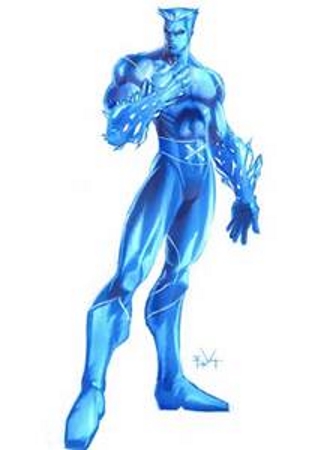
To be honest, it says more that affable Iceman won’t work so he has to be turned either into a badass or a gay (but not both)
But the same powers of ice generation were previously used by a then little known character called Jack Frost (who was revived for the Liberty Legion series). Jack was the first creation of a then little known guy called Stan Lee. So Stan recycled an idea of his from the forties into the sixties, or he forgot he ever created the character and instead followed the same logical track to the same destination.
The Beast: Will Murray, the novelist and executor of the literary estate of Lester Dent, who created Doc Savage, has suggested the Beast may have been inspired by “Monk” Mayfair, a companion of Doc Savage who, like Hank McCoy, had an ape-like appearance and was both a genius and scientist. Both heavily used slang until Hank McCoy was quickly made more erudite.
Professor X is largely built on the idea he’s a genius, and extend that to telepathy, and as was common in the fifties, telepathy made his hair fall out. He was given the odd stare that Kirby usually used for villains. To emphasize again that his power is in his mind, he was put in a wheelchair.
Marvel Girl. It’s known that the company long had a fascination with naming things ‘marvel’ like Marvel Mystery Comics, Marvel Tales, five Marvel Boys, Marvel Girl, Ms Marvel, and seven Captain Marvels. It’s as generic a name as you can get.
She is telekinetic, able to move things with her will or mind. But with all superheroines she has severe limitations on her abilities. She couldn’t lift more than she could physically carry with her telekinesis or she’d get a migraine and faint and have to be carried by the Angel.
That last bit sounds like a bad country song.
The original team were not part of a school for gifted youngsters, it was a single class. It was as if a comic book was trying to keep the size of the cast down as if it was paying actors. Compare this to Harry Potter, where the core group is always bouncing off other groups of students.
Professor Xavier’s School for Gifted Youngsters was inspired by a real school for gifted youngsters. This is the secret source of inspiration no one’s ever suggested before. The school was called, in full, St Calasanctius Preparatory School for Gifted Youngsters. It was founded in 1956 by refugees from the uprising against communist control of Hungary. If you remember, Henry Pym’s first wife, Maria, was killed by the Communist regime in Hungary. She became the very last comic book character to die and stay that way. (Damn. Now they’re going to revive her, aren’t they?)
The school for gifted youngsters began with five students, all male. It was run by a bald guy: not a professor but a Father (priest): not Xavier but Geringer. Instead of superpowers, the students had to be gifted (IQ from 130 to 164, above that you’re a genius).
In the early sixties it was hit with controversy and made the news. Some people accused it of being a Communist front. No, I’m not kidding. Yes, you can make this stuff up. Those people did, in my opinion. They made it up.
So the X-Men were a cookie cutter group pulled together from bits and pieces lying about in popular culture. That’s what Stan Lee has always done. The trail from source of idea what goes on the page is usually pretty short with him.
Face it, Stan Lee a showman, he takes from what’s around and does what others have done. He builds networks rather than creates ideas. How often did he go bankrupt again? Really, he’s kind of Donald Trump but with good publicity and with a different kind of bad hair. Like Donald Trump, he surprised a lot of the hoity toity people who thought comic books were for uneducated angry white people.
Do those people get anything right?
And as will so often be mentioned, the X-Men didn’t do all that well with the first team. The title ‘only’ lasted 66 issues before going into reprints. 66 issues would look good today to any company other than Marvel and DC, and increasingly it would look terrific to those two companies as well.
What happened? Several things both good or bad.
One clue is each one of the original six becomes more powerful with the second series. Marvel Girl becomes the cosmic Phoenix but even on her own, without a cosmic entity spurring her on, she can now lift 50 tons with her telekinesis.
Angel becomes Archangel and gets a lot more powers than just flight. The Beast becomes smarter, stronger, has heightened senses, and generally is in a bigger league as he moves from the X-Men to the Avengers. Cyclops’ optic blasts are stronger and Iceman can produce more ice and is willing to make icicle spikes on his ice covering, as if he’s wearing armor.
The original X-Men were underpowered. This means they were kind of boring to read. As individuals they couldn’t do enough different things. This is why none of them could sustain a solo title. Iceman and Angel couldn’t add much to the Champions, another title that failed partly because they weren’t interesting.
The X-Men also had too fixed a roster, so when society changed, they couldn’t. Created in 1963, they were all white and almost wholly male. As that became less acceptable they couldn’t change the characters. Avengers come and go, but a class in a small school stays the same.
The second (later third) team was barely a school at all. They were older, they had people in and out of roster, and clearly there was a conscious decision to include people from all over the world. But there were still some clichés: can Africans ever be see something unusual and not worship it? I bet they can if you try hard.
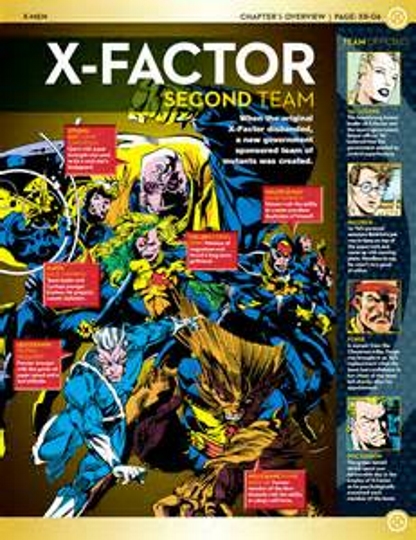
And they did it again, and then they did it this time, and they kept doing it until mutants were their own world and Marvel closed it all down because they no longer had the movie rights
The original costumes were bad and now exist only as nostalgia fast approaching the status of camp. The first team did get new costumes but these are among the worst in comic books ever. Top 100 worst costumes? These and Green Arrow’s original K-Mart t-shirt would be there. The Angel’s costume might top the list. This is odd because his old Avenging Angel costume is quite snappy and his gas-gun toting gimmick might make his a viable character.
But the X-Men do something very right that has been overlooked. Early on the X-Men largely face other mutants.
In the early issues they face Magneto, Quicksilver, Scarlet Witch, Mastermind, the Toad, the Vanisher, the Blob, and Unus the Untouchable. All of these are mutants. Even when they go to Ka-Zar’s Savage Land they often wind up fighting mutants. It gives a closed-in feel to their world. For a long time that hurt them. But eventually society ceased to be obsessed with the need to break down walls and started obsessing with how there are no walls left in society.
What had been a problem increasingly became a strength because it provided a framework for various themes. Without extended family or lifelong friends in their own lives, people tried to create communities more and more. The problems faced with that are universal, so the various attempts to build themed communities from LGBT to ethnicities to the old standby of new religions could look at the X-Men and see their own problems in it.
This was played up by having the new X-Men as more than American-born with a Canadian, an African, a Russian, a German, a Japanese, an Irishman, and so on. Even the Americans are more diverse with one a southerner, one who’s Jewish, and at one point there’s a dragon in there, too.
The failure of the X-Men first class is relative, and much of it was a failure because society shifted and the X-Men couldn’t respond to that. It was too stiff in the areas where it needed to be able to change. Yet it was half thought through, as shown by changing the name of a main character, changing Slim Summers to Scott Summers.
They had to be recast. The comic about mutation needed its own mutatis mutandis. Once that was done, it could fulfill its potential by telling a story not of mutation, or of persecution. These were consequences to the main thrust of the story, working out who you really are.

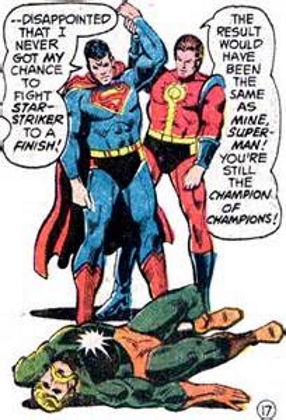
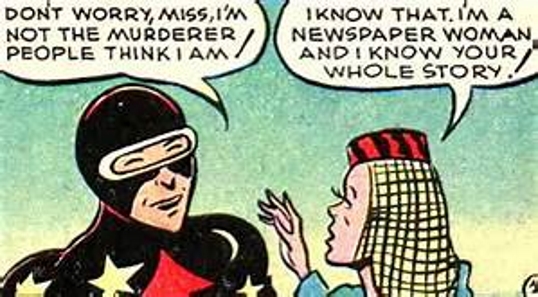





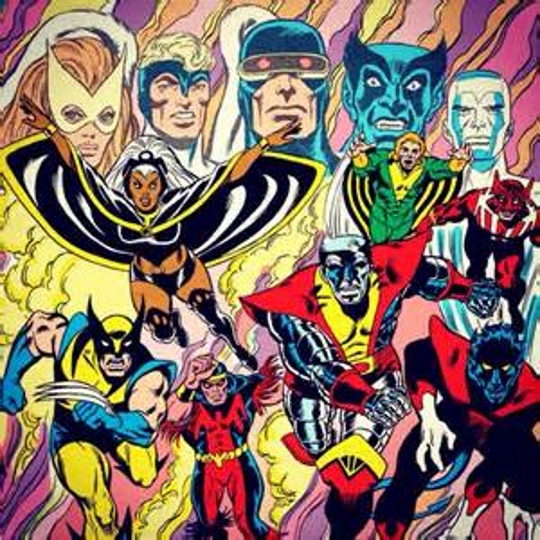
Comments are closed.